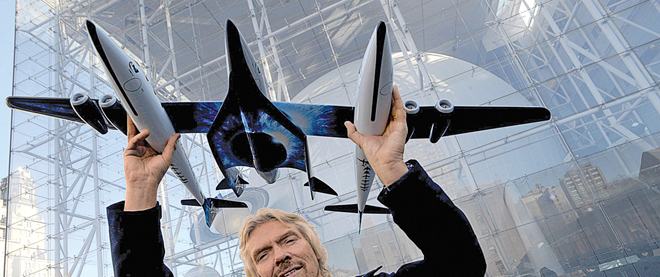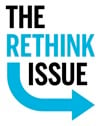The space race is quickly becoming a commercial endeavour
How the wealthy are shooting for the stars—privately
Photo by Dennis Van Tine/AP
Share

 On Aug. 24, an unmanned Russian cargo spaceship bound for the International Space Station (ISS) crashed in eastern Russia, sent down by engine failure in its Soyuz carrier rocket. Russia temporarily grounded all launches to the ISS to investigate, but the crash underlined a pressing problem: since the U.S. retired its aging fleet of space shuttles in July, any astronaut or cargo heading to the space station has no choice but to hitch a ride with Russia. For a ride on the Soyuz, NASA pays about $56 million per seat—and the cost will go up to $62.7 million in 2014.
On Aug. 24, an unmanned Russian cargo spaceship bound for the International Space Station (ISS) crashed in eastern Russia, sent down by engine failure in its Soyuz carrier rocket. Russia temporarily grounded all launches to the ISS to investigate, but the crash underlined a pressing problem: since the U.S. retired its aging fleet of space shuttles in July, any astronaut or cargo heading to the space station has no choice but to hitch a ride with Russia. For a ride on the Soyuz, NASA pays about $56 million per seat—and the cost will go up to $62.7 million in 2014.
It must be a blow to American pride. The U.S. doesn’t want to rely on Russian rockets forever, and other nations like China are pushing ahead with ambitious space programs. But NASA doesn’t plan on building more shuttles. The U.S. space agency is shifting its focus to deep space exploration, and intends to buy rides into low Earth orbit (where the space station is) from private companies instead.
Like a commercial airline, these companies will sell rides not only to NASA, but to academics, businesses, and the curious public, too. A handful of ultra-wealthy entrepreneurs are backing some of the most ambitious ventures in space travel. SpaceX was launched by Elon Musk, who co-founded PayPal and is CEO of Tesla Motors; Blue Origin comes from Amazon’s Jeff Bezos; and Virgin Galactic is an offshoot of Virgin Group, founded by Sir Richard Branson. New Mexico is completing a taxpayer-financed commercial space terminal, Spaceport America, with Virgin Galactic as its anchor tenant.
For the wealthy entrepreneurs behind some of these efforts, vanity may play as big a role as the pursuit of NASA contracts. Branson arrived at the recent dedication of Spaceport America by rappelling down the side of the terminal, spraying a bottle of champagne before taking a swig. And Musk, who has said he wants to retire on Mars, sees his company as similar to “the shipbuilding industry in the time of Christopher Columbus,” says spokesperson Kirstin Brost Grantham.
On Sept. 15, the U.S. Senate approved $500 million (part of NASA’s 2012 budget) aimed at boosting private companies’ efforts to get into space. Four are currently funded under the NASA program: Boeing, Blue Origin, SpaceX and Sierra Nevada Corporation. (More money is on the table for next year.) NASA wants a vehicle that can carry at least four crew members and cargo into low Earth orbit once or twice a year. When they need to get to the ISS, “we’ll buy a seat, like on an airline,” says NASA spokesperson Candrea Thomas. The idea is to have two or three private services competing against each other, to drive down the cost of a ticket, which will still likely run into the millions, at least in early days. They hope to have astronauts flying by “the middle of the decade.”
So far, SpaceX’s record has been impressive. Last year, the California-based company launched its Dragon spacecraft (a capsule that could one day carry crew) and Falcon 9 rocket, which orbited Earth almost twice before landing in the Pacific. That day, “SpaceX became the first commercial company in history to recover a spacecraft from orbit,” Brost Grantham says. So far, only five nations have been able to accomplish that: the U.S., Russia, Japan, China and India. Within the next few months, SpaceX plans to dock the Dragon capsule with the ISS in a test run. If all goes according to plan, the company will be ferrying crew to the ISS within the next few years.
Traditional aerospace firms are also throwing their hats into the ring. Boeing, which has a long history of working with NASA, is designing a capsule that can carry up to seven people, says spokesperson Edmund Memi, who compares it to a “passenger van.” Its vehicle is mostly reusable and autonomous (one pilot needs to be on board as a backup). “We’re not trying to pioneer radically new technologies,” he says. “We know how to go back and forth from low Earth orbit. The issue is to keep it affordable.”
To attract more clients, Boeing has signed an agreement with Space Adventures, the company that put Cirque du Soleil founder Guy Laliberté on the Soyuz in 2009, Memi says. (Laliberté reportedly paid $35 million for the twelve-day trip.) Bigelow Aerospace, a U.S. company, is developing commercial space stations, and Boeing hopes to fly commercial flights there one day, too.
Sierra Nevada Corporation’s space systems division, meanwhile, is working on a ship called the Dream Chaser. Based on a former NASA design, the Dream Chaser can take up to seven crew members, and lands horizontally, like an airplane. With such a gentle landing, SNC could potentially fly fragile science experiments into space and back. Erika Wagner, senior director of prize development, exploration at the X Prize, a competition designed to expand the use of space, predicts there will be “massive demand” for cheap commercial space flights from academic and industrial researchers. For a relatively affordable price, “you could fly your iPhone into microgravity,” she says. “Any school or Boy Scout troupe could put a piece of hardware into space.”
Despite all the excitement, private space travel is still a tremendously risky new industry. In September, after the Wall Street Journal reported that an unmanned Blue Origin spaceship lost control and had to be destroyed during a test flight, a note signed by Bezos was posted to the company website blaming “flight instability” for the incident. “Not the outcome any of us wanted, but we signed up for this to be hard,” he said. Unlike the other companies, Blue Origin has been relatively guarded in publicizing its milestones, and a spokesperson said the company isn’t currently granting media interviews.
NASA’s ultimate goal is to dramatically cut the cost of space flight. Launching just one space shuttle cost about $450 million per mission, but competition should drive down the price of a ticket. In a recent report, NASA predicted how much it might have spent developing SpaceX’s Falcon 9 rocket. Using NASA methods, the vehicle would cost up to $4 billion, it concluded, noting that SpaceX managed to do it for $300 million. There could be a number of reasons for SpaceX’s cheaper approach, the report suggests, like fewer NASA processes and less overhead.
Even so, the space agency is facing tough opposition from some members of the U.S. Congress, who remain skeptical that taxpayer money should be spent boosting private efforts to get rich tourists and non-American astronauts into space. On Oct. 26, at a hearing of the committee on space, science and technology, lawmakers questioned whether these private companies would eventually attract enough non-NASA customers to support themselves. Musk, who was there to testify, said he expected to charge about $20 million per seat per trip into orbit, about one-third of what Russia charges NASA today.
It will realistically be decades before most people can afford a ticket into space. With this in mind, Virgin Galactic is following a slightly different business model: instead of attempting to offer services to low Earth orbit, the company plans to make suborbital flights, which don’t go as high (they wouldn’t reach the ISS), but will be comparatively affordable. “Seats on commercial orbital space travel will probably stay at least in the millions of dollars, if not tens of millions, for some time,” CEO George Whitesides told Maclean’s. Virgin Galactic will sell tickets into space for $200,000, which includes training on the ground and a two-hour flight with about five minutes in microgravity. Although the company won’t announce when to expect the first launch, almost 450 people have signed up, Whitesides says, and most of them have put down a full deposit. “We’re moving to a time where, in 20 years, most people would know somebody who has been into space,” he says.
If the gamble pays off, it will usher in a new era. “In the history of human space flight, only about 530 people have been into space,” Wagner says. “Today, private companies are holding tickets for as many astronauts as have ever flown in history.”
*****
Private companies hope to sell rides not only to NASA but to ordinary citizens. Below are some of the spacecraft currently in development.
Spacex
The free-flying, reusable Dragon spacecraft could carry up to seven passengers to the ISS. Pressurized cargo goes inside the capsule; unpressurized cargo goes in the “trunk.”
Sierra Nevada Corporation
Based on a former NASA design, the Dream Chaser is a fully reusable spacecraft that could carry up to seven crew members into low Earth orbit. Capable of a gentle runway landing, it’s ideal for carrying fragile science experiments back to Earth.
VIRGIN Galactic
SpaceShipTwo can hold up to six passengers and two pilots, performing two-hour suborbital flights with maximum room for astronauts to float in microgravity. Side and overhead windows provide a view.